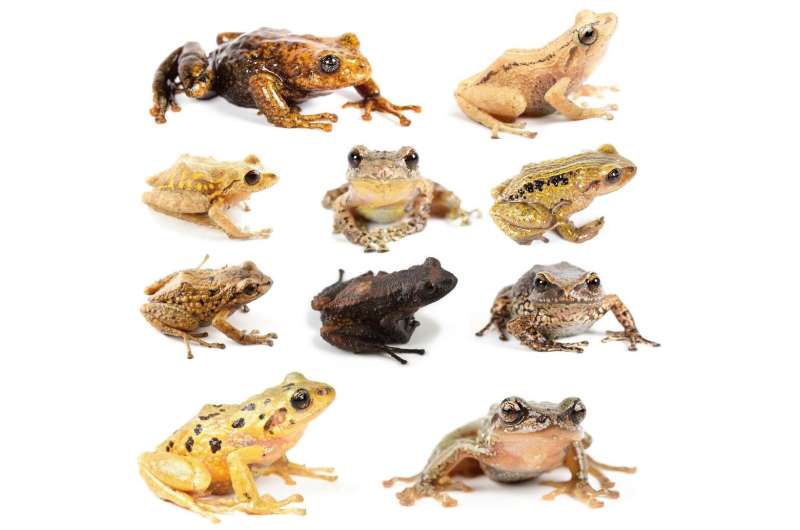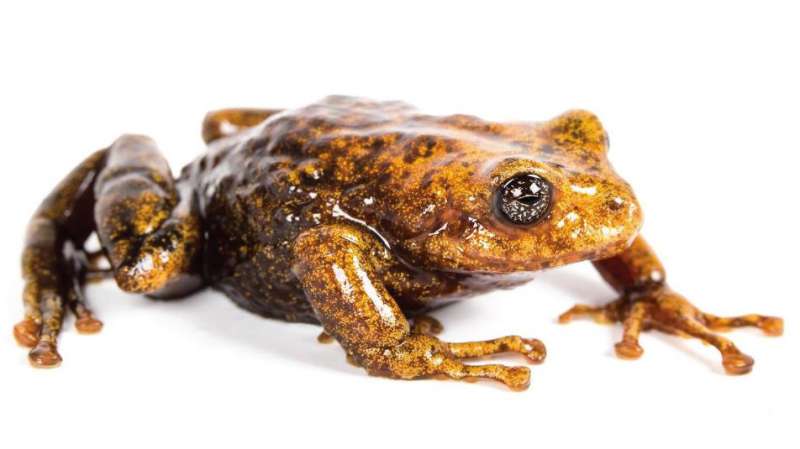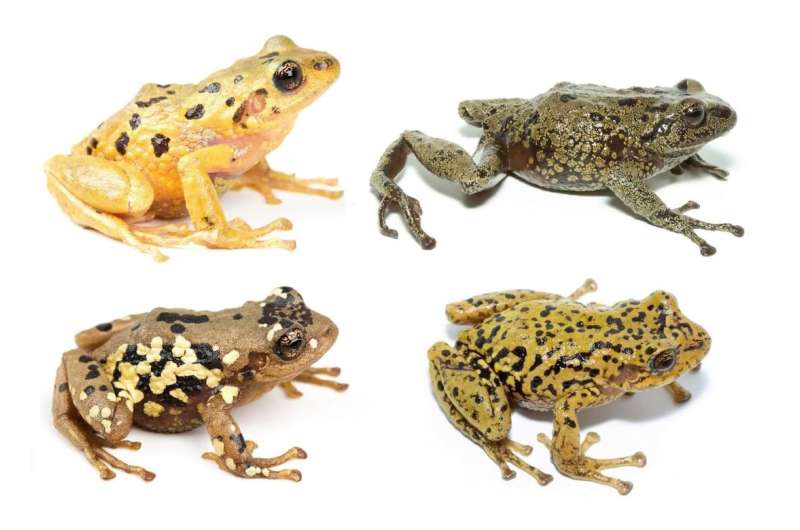Eleven new species of rain frogs discovered in the tropical Andes

Eleven new to science species of rain frogs are described by two scientists from the Museum of Zoology of the Pontifical Catholic University of Ecuador in the open-access journal ZooKeys. Discovered in the Ecuadorian Andes, the species are characterized in detail on the basis of genetic, morphological, bioacoustic, and ecological features.
On the one hand, the publication is remarkable because of the large number of new species of frogs. Regarding vertebrate animals, most studies only list between one and five new to science species, because of the difficulty of their collection and the copious amount of work involved in the description of each. To put it into perspective, the last time a single article dealt with a similar number of newly discovered frogs from the western hemisphere was in 2007, when Spanish scientist Ignacio de la Riva described twelve species from Bolivia.
On the other hand, the new paper by Nadia Paez and Dr. Santiago Ron is astounding due to the fact that it comes as part of the undergraduate thesis of Nadia Paez, a former Biology student at the Pontifical Catholic University, where she was supervised by Professor Santiago Ron. Normally, such a publication would be the result of the efforts of a large team of senior scientists. Currently, Nadia Paez is a Ph.D. student in the Department of Zoology at the University of British Columbia in Canada.

Unfortunately, amongst the findings of concern is that most of the newly described frog species are listed as either Data Deficient or Threatened with extinction, according to the criteria of the International Union for Conservation of Nature (IUCN). All of the studied amphibians appear to have very restricted geographic ranges, spanning less than 2,500 km2. To make matters worse, their habitats are being destroyed by human activities, especially cattle raising, agriculture, and mining.
Amongst the newly described species, there is the peculiar Multicolored Rain Frog, where the name refers to its outstanding color variation. Individuals vary from bright yellow to dark brown. Initially, the studied specimens were assumed to belong to at least two separate species. However, genetic data demonstrated that they represented a single, even if highly variable, species.

The rest of the previously unknown frogs were either named after scientists, who have made significant contributions in their fields, or given the names of the places they were discovered, in order to highlight places of conservation priority.
More information: Nadia B. Páez et al, Systematics of Huicundomantis, a new subgenus of Pristimantis (Anura, Strabomantidae) with extraordinary cryptic diversity and eleven new species, ZooKeys (2019). DOI: 10.3897/zookeys.868.26766
Journal information: ZooKeys
Provided by Pensoft Publishers





















